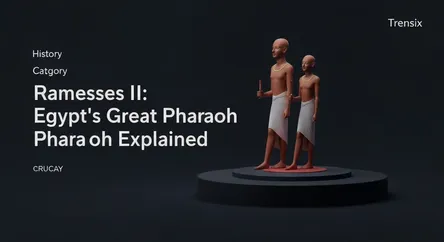History
Ramesses II: Egypt's Great Pharaoh Explained

Discover Ramesses II, one of ancient Egypt's most powerful pharaohs, known for his long reign, massive building projects, and military prowess.
What is it?
Ramesses II, often called Ramesses the Great, was the third pharaoh of the Nineteenth Dynasty of Egypt. His reign of 66 years (1279-1213 BCE) is considered one of the most celebrated in Egyptian history. He is widely regarded as one of the most powerful and influential pharaohs, leaving behind an indelible mark on the landscape and culture of ancient Egypt. His rule represented a peak of Egyptian power and artistic achievement.
Why is it trending?
Ramesses II's fame endures due to his monumental achievements. He was an unparalleled builder, commissioning vast construction projects like the famous rock-hewn temples of Abu Simbel and his mortuary temple, the Ramesseum. Militarily, he is renowned for the Battle of Kadesh against the Hittite Empire, one of the largest chariot battles ever fought. Following this conflict, Ramesses II negotiated what is considered the world's first known peace treaty, showcasing his diplomatic skill. His name and image are found on countless monuments across Egypt.
How does it affect people?
The legacy of Ramesses II profoundly shapes our understanding of ancient Egypt. His massive temples and colossal statues not only reinforced his divine authority during his time but also provide invaluable historical records through their inscriptions. Today, these monuments are among Egypt's most significant tourist attractions, forming a cornerstone of the nation's cultural heritage and tourism industry. His long, stable reign solidified Egypt's borders and led to a period of prosperity, influencing the course of the New Kingdom and leaving a legacy that continues to captivate historians and travelers alike.